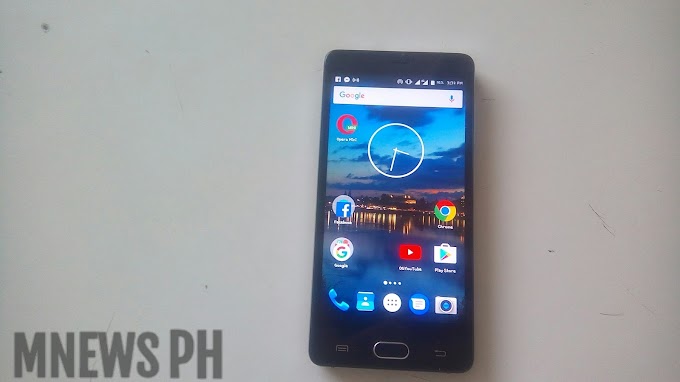
Oppo has always had its own way of standing out among the growing crowds of Chinese phone manufacturers and judging by sales reports and fan approval, the OEM seems to be doing at least something right.
The F-series of affordable, camera-centric devices has played a vital part in this success formula since the beginning of 2016. The Oppo F1, the original "selfie-expert", managed to appeal to a surprisingly broad user base. Its obvious selling-point aside, the F1 proved to be a quite decent all-round mid-ranger with fast performance, great build quality, excellent display and nicely sounding speaker.
But it was the F1 Plus, the follow-up that came a couple of months later, that really got the series popular. It ushered in a design change and addressed many of the weak points of its predecessor, with additions like a bigger, 1080p AMOLED panel, MediaTek Helio P10 SoC, 4GB of RAM and an even better 13MP selfie shooter. Naturally, the price point was changed as well, almost doubling the $250 or so asking price of its predecessor. Despite the price hike, however, the F1 Plus sold quite well helped by a successful marketing campaign. At one point Oppo even claimed it is shipping an R9 unit (its model name in China) every 1.1 seconds for a total of over 7 millions about two months ago.
With such numbers, it is only natural for the Chinese OEM to do the best it can to keep the ball rolling. Enter the F1s. It is a rather controversial step that could either make or break Oppo's next few quarters. Instead of leaning on the popularity of the F1 Plus formula, Oppo apparently decided to bring its prices back down again and re-focus on the budget segment. This has resulted in a device that is in the original F1 price league with a $270-ish price tag, but also way too close to it specs-wise for anyone looking for an upgrade.
Oppo F1s key features
- Beefed-up selfie camera: 16MP, 1/3.1" sensor size
- 154.5 x 76 x 7.4 mm, 160g body
- 5.5" 720 x 1,080px LCD with 267 ppi; 2.5D scratch-resistant glass
- ColorOS V3.0.0i , based on Android 5.1 Lollipop
- Very quick and accurate fingerprint reader in the home button
- MediaTek MT6750 chipset, octa-core 1.5GHz Cortex-A53 CPU; Mali-T860MP2 GPU; 3GB RAM
- 13MP, f/2.2 camera with 1/3" sensor size; 1080p@30fps video recording and phase detection autofocus; Single LED flash
- 32GB of built-in storage and a dedicated microSD card slot
- Dual-SIM connectivity
- LTE Cat.6 (300Mbps); Wi-Fi a/b/g/n; A-GPS/GLONASS receiver, Bluetooth v4.0, FM radio with RDS
- Active noise cancellation with a dedicated mic
- 3,075mAh non-removable battery
It looks like Oppo tried to make a cheaper version of the F1 Plus, but they might have just gone a step too far in slimming down the specs of their new proposal. What this means is that performance-wise, the F1s positions itself dangerously close to the original "Selfie expert," which is far from ideal when you are spending close to $300.
It seems the idea behind the F1s was to make an F1 with a bigger screen or a more affordable version of the best-selling F1 Plus. It seems they've succeeded in both goals.
Deciding whether the Oppo F1s is worth it or not depends on your expectations and point of view. On the outside, the handset is quite polished and good looking with a fast fingerprint reader and easy-to-use software. The 720p LCD and the Mediatek MT6750 SoC mean acceptable but otherwise unremarkable performance.
The price premium of $70 over the F1 gets you a bigger screen, a bigger battery, an excellent fingerprint reader plus a nice metal build and design, which sounds like a nice deal overall. The ambitious 16MP front camera is far from perfect, but currently, there aren't any powerful selfie experiences up on offer below the $300 mark that we can instantly think of.
Key test findings
- Build quality is superb, fit and finish is exemplary, though the design isn't exactly original.
- The screen could've been brighter, colors are a good compromise between punch and accuracy; sunlight legibility is decent.
- Battery life is very good across the board, except in video playback where the F1s is only about average.
- The user interface is heavily influenced by iOS, bordering on plain copying. There's hardly any bloatware pre-installed though, which is always nice.
- Performance is average all around. The CPU and GPU are both underpowered, and overall the handset tends to fall slightly short even of the original F1 performance level.
- The loudspeaker falls in the Good category in our test, which is good news.
- The 13MP rear camera captures detailed images, but has trouble with the edge-to-edge sharpness and auto exposure control.
- The 16MP selfie camera doesn't quite live up to the expectations, images are not as detailed as the resolution would suggest and they are a bit on the soft side.
- 1080p video quality is subpar.
All things considered, the Oppo F1s does have its own unique angle and potential user market of people who are looking for the same qualities found in the original F1 but on a bigger screen diagonal. The small hike in price is more than worth the upgrade and the F1s is indeed a true expert in providing great value at a bargain price point.




0 Comments